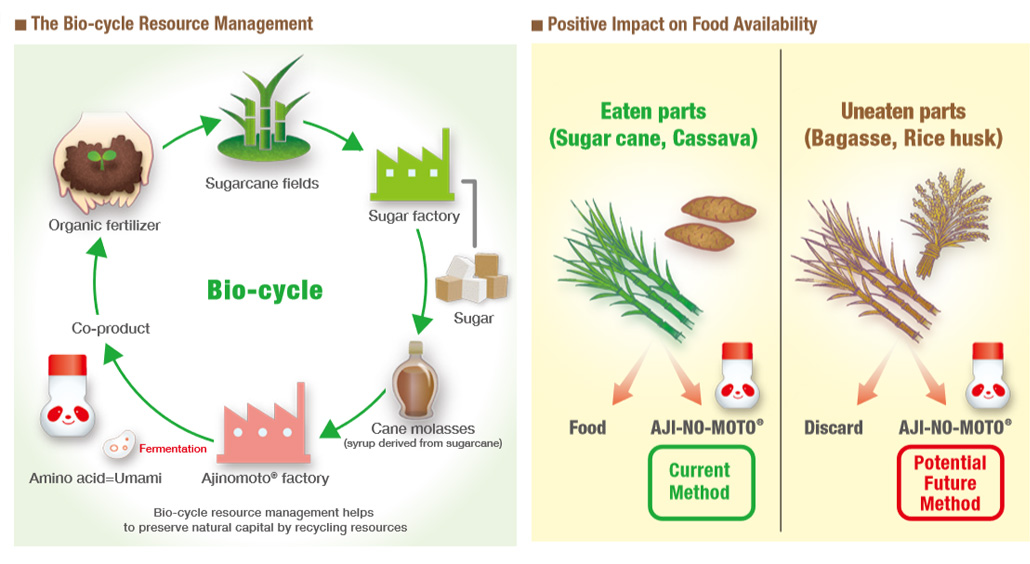The Future of Food
- The world population is expanding faster than our capacity to create enough food for everybody
- As a pioneer in the pursuit of the infinite potential of amino acids, one way Ajinomoto Co., Inc. (Ajinomoto Co.) is addressing this food crisis is by investigating new sources of amino acids
- Following the protocol of the Natural Capital Coalition, we have quantified the impact of using traditional, edible sources to manufacture amino acid products versus that of using alternative organic sources
- This is just one example of Ajinomoto Co.’s dedication to helping everyone on Earth eat well and live well, far into the future

Food Evolves Too!
The way that humans eat has changed a lot over the course of history. Some of these changes are obvious—for example, wooly mammoth just isn’t a dinner option any more—but some of these changes are pretty surprising. For example, consider oats. Today oats are considered a completely standard food, eaten as oatmeal or in breakfast cereal, or in snacks such as cookies.
But in fact, for centuries oats were considered weeds. As recently as 1755, the dictionary defined oats as “eaten by people in Scotland, but fit only for horses in England.” (To this, a witty Scotsman replied, “That’s why England has such good horses, and Scotland such fine men!”)
Even today, some plants and animals are considered food in some parts of the world, but not in others. And even for common foods, like grapes, there are parts of the plant that are eaten and enjoyed only regionally—like grape leaves, which are traditional fare in Greece and Turkey, but thrown away in most other countries.

Today’s Food Crisis
As discussed in the first newsletter in this series, the world population is quickly expanding beyond the availability of food. According to the latest figures, published by the United Nations in 2017, the world population currently stands at about 7.6 billion, and it’s expected to reach 9.8 billion by the year 2050.
To feed this number of people, food production needs to increase by 60% over 2005-2007 figures. But the unfortunate truth is that the amount of arable farmland available around the world has plateaued, and is actually expected to decrease in the future. The main reasons for this are decreasing soil quality, abandonment of farmland, and climate change.
As a result, various international organizations such as the United Nations have turned their attention to the food crisis as a critical issue facing our planet.
Read more